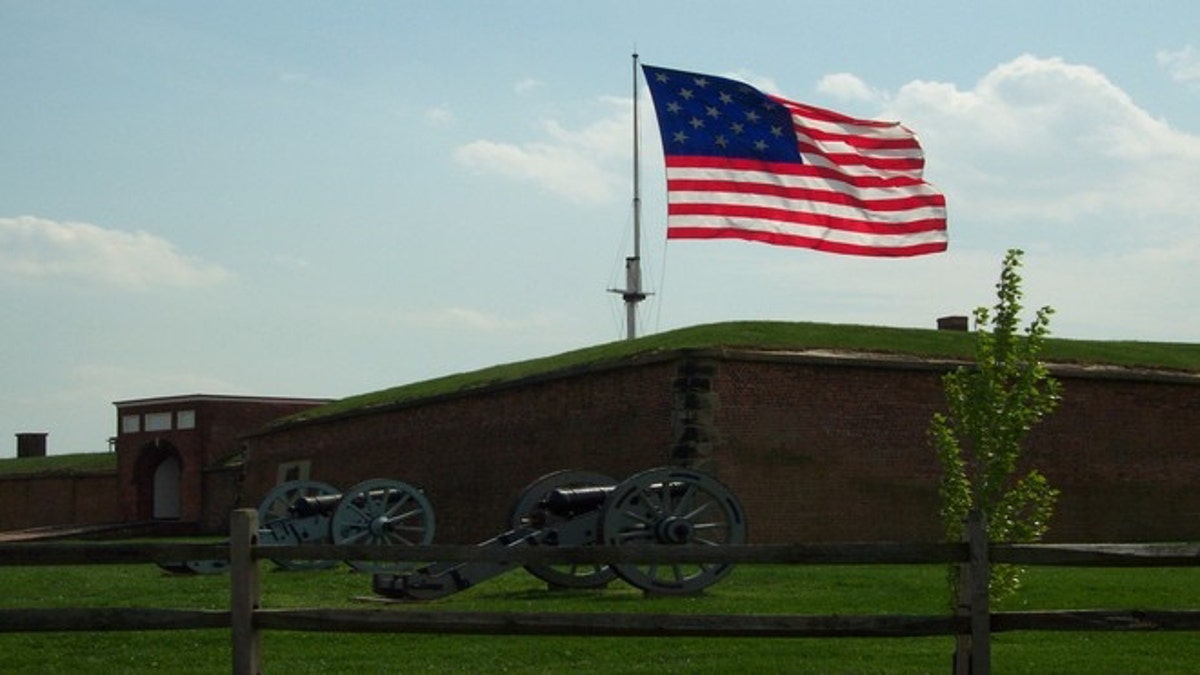
The Star-Spangled Banner over Fort McHenry (National Park Service)
“O say can you see . . . ?” is the famous question Francis Scott Key asked 200 years ago when he wrote “The Star-Spangled Banner,” our national anthem.
What comes to mind when you hear those lyrics? How do they stir your patriotic soul? Key wanted you to see what he saw, hear what he heard and feel what he felt. O say, can you?
We can remember that the British military burned the White House and U.S. Capitol on Aug. 24, 1814. British Rear Admiral George Cockburn, who set Washington ablaze, believed there wasn’t a “place on the seaboard which can hold out any length of time.” How wrong he was.
[pullquote]
We can remember that 15,000 men – white, black, young and old – gathered in Baltimore three weeks later to stop the British invasion. They built ramparts and barriers to gallantly defend their city, state and nation.
Knowing that Key witnessed the attack while being held captive by the enemy helps us understand his emotions. He had boarded a British ship to negotiate the release of a U.S. war prisoner. Alexander Cochrane, the commanding British admiral, agreed to free the man, but he wouldn’t let them leave until after the redcoats attacked Baltimore.
“After discussing so freely our preparation and plans, you could hardly expect us to let you go on shore in advance of us,” Cochrane explained.
We can picture Key stuck on board, surrounded by ships flying the British flag. We can feel his worry as the twilight’s last gleaming faded to black.
“To make my feelings still more acute, the admiral had intimated his fears that the town must be burned, and . . . it would have been given up to plunder . . . It was filled with women and children,” Key worried.
We can sense his suspense on Sept. 13 as he watched bombs and rockets fly from the British ships toward Baltimore’s star-shaped Fort McHenry. We can feel the uneasy silence when the bombs stopped at dawn, after 25 hours, and the small U.S. storm flag disappeared from the fort.
What would replace it? A white flag of surrender? A British flag? We can feel Key’s relief when the broad stripes and bright stars of a giant U.S. flag measuring 30 by 42 feet soared to the top. Not only was Baltimore safe, but America was also secure. The home of the brave would remain the land of free.
With proof that our flag was still there, poetic phrases poured from the Maryland attorney’s pen. When Key arrived in Baltimore two days later, he’d written the lyrics to “The Star-Spangled Banner.”
When sight becomes a gift of beauty and hope, it is called insight. That’s what Key had come to see. Through newspapers, Americans soon discovered his song, which became an anthem for the ages.
Yet, as much as we can picture what Key experienced back then, we can see today what he couldn’t see but hoped would happen. The U.S. flag has waved for 200 years since, surviving a Civil War and two world wars. It saw civil rights march and win; it soared to the moon; it watched a cold war crumble.
Key’s genius is that his patriotic lyrics transcend time. We can apply them to life today as easily as he applied them in 1814.
His words move us. They unite us. And best of all, they have the power to outlast us.
O say can you see . . .? As we celebrate “The Star-Spangled Banner’s” 200th anniversary, we can see that for sure.
